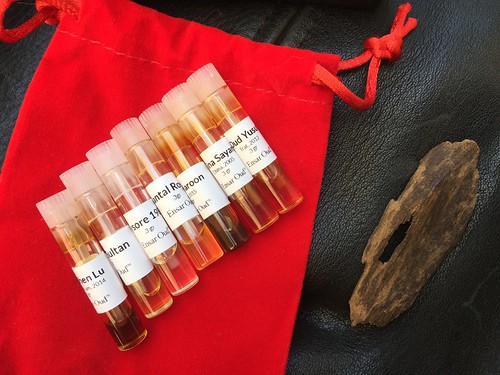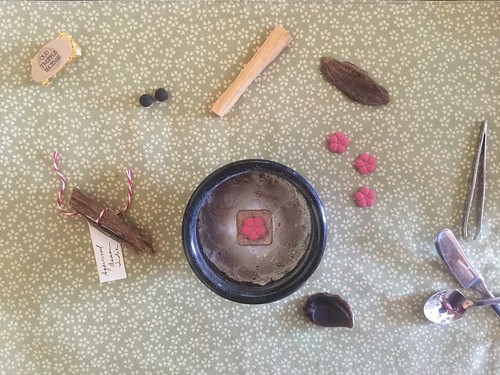Ensar Oud - First Impressions

Part of the art of selling single ingredients commodities such as tea lies in the ability of labeling and dating them appropriately with a memorable name. Dealing with oud is no different, with each specimen having a limited supply and very high demand.
Ensar Oud has done an outstanding job in not only sourcing a wide variety of pure oud oils (for wearing neat on the skin, I thought you might ask) and wood (for burning) - but also giving them imaginary names.
Ensar Oud does that with enticing names that make it a lot more memorable than just dates and numbers (although these do have their place and value in recognizing and comparing various aromatic specimens).
Jing Shen Lu
Khao Ra Kam, 2014
Straight from the vial: Notes of spikenard, a tad minty-cool, alongside pungent notes of paint, tar and carbolineum. Reminiscent of antique patchouli as well.
On the skin: Elegant, clean, cool yet also spicy. Vetiver, berry and grass notes - reminiscent of nagramotha and davana mixed together. Tobacco-like with hints of helicrysum also.
Dryout: Woody, sweet yet clean.
China Sayang
China, 2005
Straight from the vial: Musty, old furniture, yet also mellow. Another time it smelled intense animal odours to me - like being surrounded by goats and camels, or sitting in a tent made of goat's hair and sheep's wool, dusty old cow cakes, and visiting caves where the above animals slept in.
On the skin: Grows warmer and sweeter on the skin.
Dryout: Dusty, with the animalic barnyard remnants persist. I happen to be very fond of goats, but find that wearing this on its own is a bit too realistic. I would be curious to blend it in a perfume where it would add a surprising element but only hint to the animals, without smelling so literal.
Oud Haroon
Siam, 2015
Straight from the vial: Funky, animals, valerian, hint of mint, mushroomy (like sour Cepes absolute), Marmite undertones. All in all quite yeasty.
On the skin: Strong yet somehow dull and flat.
Dryout: Becomes cooler woodier as it dries on the skin. Elegant finish to a rather funky beginnings.
Oud Yusuf
Trat, 2012
Straight from the vial: Although it begins with a blow of gasoline fumes notes that brings to mind the rather harsh opening of nagramotha (AKA Cypriol, a type of papyrus with a scent that closely resembles vetiver) - this is the mellowest of the four. Berry-like and smooth-wood body, with dusty clay and dried figs undertones.
On the skin: Clean woody. Hints of roasted nuts and coffee. A tad floral, perhaps even rosy. With herbaceous-grassy undertones, reminiscent of chamomile and blonde tobacco.
Dryout: Warm-woody, a little like vetiver.
After sampling oud oils and woods in various circumstances, I came to the realization that this is one of the most curious, sneaky and fascinating raw materials. It makes a huge difference when, how and where you experience the scents (as burned or warmed wood chips; oils on your skin or on paper or in the vial, etc.). Also, the order in which they are smelled makes a huge impact on their perception. If I were to smell these four ouds in a completely different order, they would smell quite different. I would recommend actually not smelling them side by side but immersing yourself completely in one at a time (which I would do later for each one of the oud oils I have in my collection).
If you decide to warm the oud chips as incense, using the Japanese koh-doh method, try different sequences of the ouds you have. Take lots of notes, not for others to read, but for yourself. It helps a great deal to refine the sense of smell and one's perception, and to pay more attention to the many nuances in these rich and complex treasures. Also this will help you to memorize the very confusing array of ouds available - which may seem useless for a layperson, but if you want to share these treasures with friends and host a little incense party - it will be very helpful to know what you're burning and in which order to place them. It will greatly affect the experience. For example: if a scent is very strong its best to place it last after the more subtle specimens. Also, memorization of what you have will help you enjoy more and be able to better appreciate other ouds that you stumble upon in other places.


